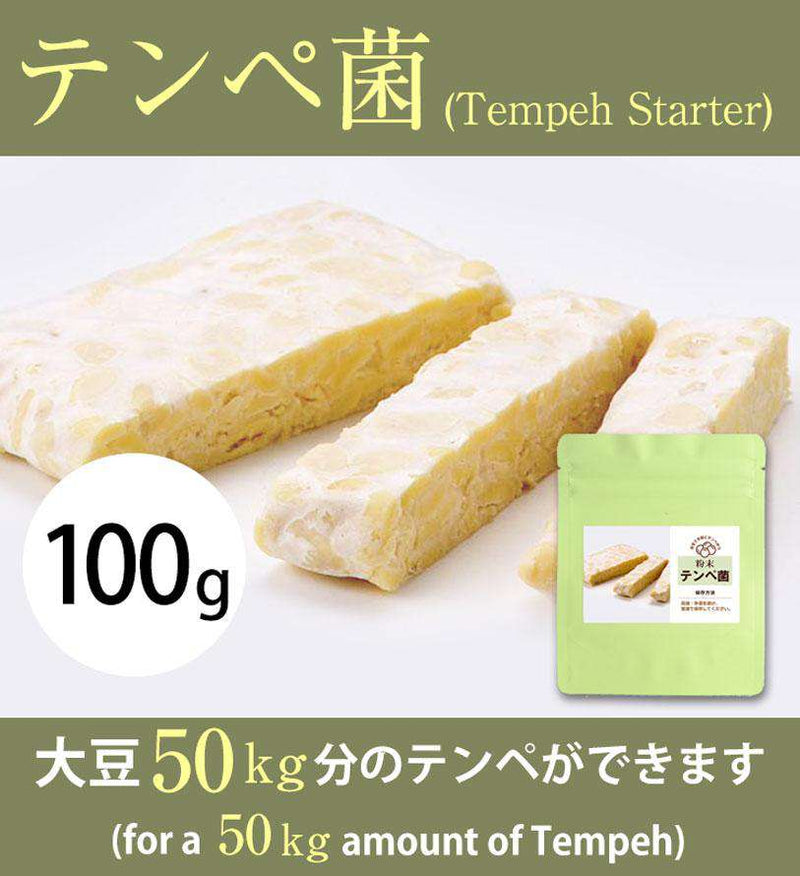
Tempeh Starter 100 gram (for 50 kg Tempeh) - The High Quality Ragi Tempe from Indonesia
Out Of Stock
High Quality Ragi Tempe from Indonesia

This is an authentic high quality tempeh starter made from non-GMO, allergen-free, rice flour. Use this starter to make delicious tempeh at home. Just by using a little amount, you can get the desired fermentation for your tempeh. (100g tempeh starter can make up to 50kg tempeh).
Enjoy freshly made tempeh and get the best health benefits from the tasty superfood.
This product is produced by Aneka Fermentasi Indonesia.
What Is Tempeh?
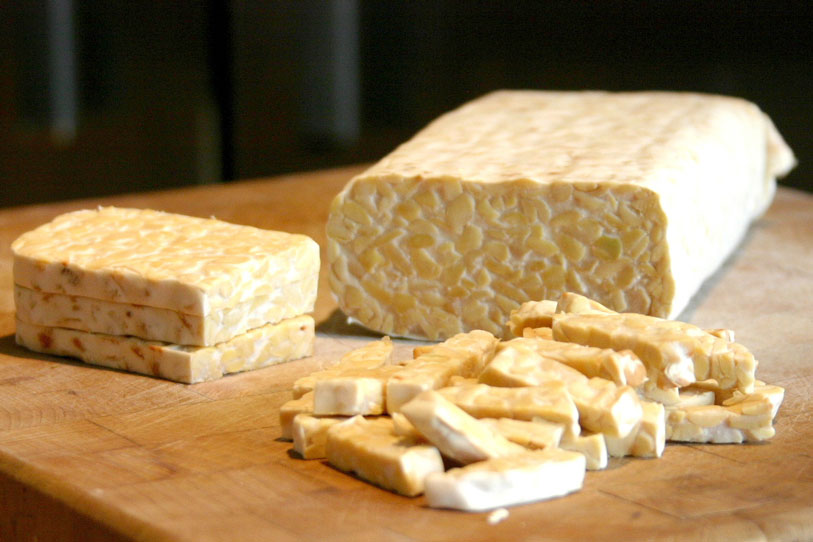
Tempeh is a fermented soybean product that native to Central Java Province, Indonesia. Like tofu, tempeh is made from soybeans. But tempeh is made by using the whole soybeans, so it has the complete or even greater nutrients.
The nutrients contained in tempeh are proteins, minerals, vitamin B, glucoses, and many others. Sometimes it is said that the amount of protein contained in soybeans can be compared to animal proteins. No wonder, many people substitute their meat intake with tempeh.
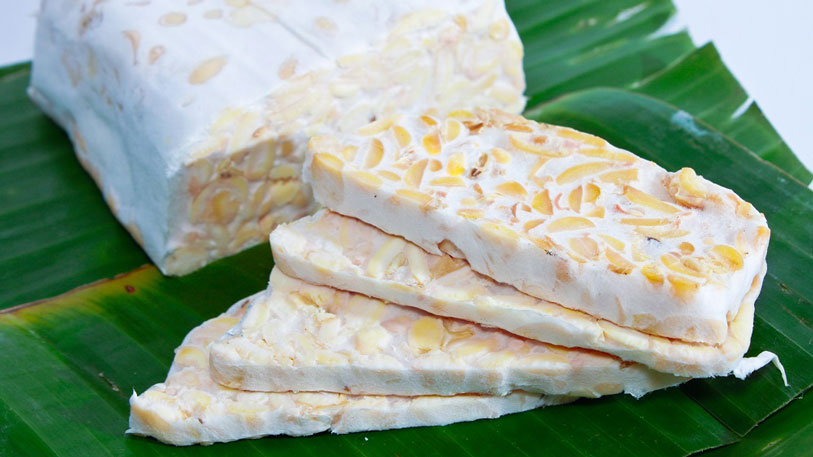
In this article, we will tell you all about tempeh, and why is it really important for your health. Once you know about tempeh and its benefits, please try to consume it by all means!
Is Tempeh Good for Your Health?
Yes! Tempeh is known to have many health benefits.
There are lots of study saying that tempeh contains lots of nutrients, so it is good for your health. Some studies also show that tempeh nutrients are more easily digested, absorbed, and utilized by the body compared to those in soybeans due to the fermentation process.
One serving of tempeh (100 grams) provides around 200 calories, around 20 grams of protein, around 10 grams of carbohydrates, around 60 grams of water, and more other good substance for your body such as plant fiber, Vitamin B, antioxidant, etc.
Tempeh is said to be one of the low-calorie food with a high-fiber, so it is also good to consume during diet or just to maintain health in general.
How To Make Tempeh At Home
*Turn on English CC for subtitles
1. Rinse The Soybeans
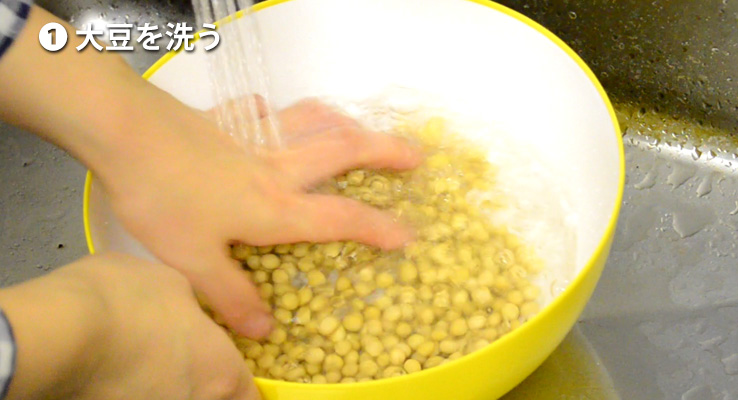
Put the soybeans into a bowl. Rinse the beans well without breaking the skin. Make sure to rinse well and get rid of the dirt. The dirt on the skin contains a lot of bacteria that would make it difficult to make good tempeh.
2. Soak The Beans Into Water with White Vinegar
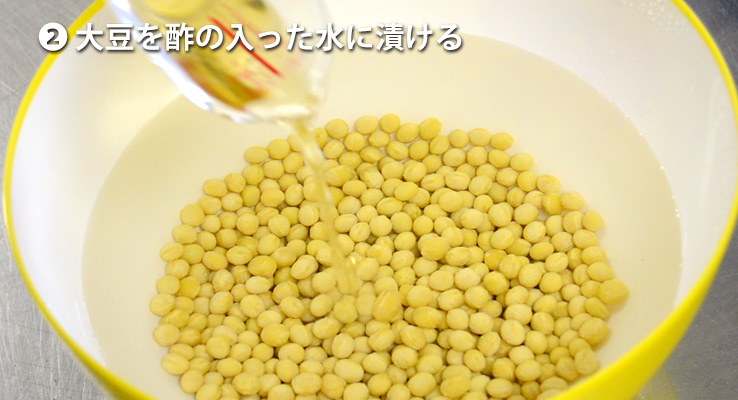
Soak the soybeans with water about 4 times the soybean weight (for example, 2 liters of water if you're using 500 grams of soybeans). The dry soybeans will absorb water and weights about 2.2 times heavier and the volume becomes more than 2.6 times its original volume.
When the water temperature reaches 20℃ or more, microorganism will grow in immersion water. To prevent the increase of unwanted microorganisms, add a little white vinegar to the water. Add about 50 ml for every litre of water. So if you are using 2 litres of water, please add about 100 ml of white vinegar.
The soaking time for the soybeans:
・25 hours in winter (Water temperature about 0-5℃)
・15 hours in Spring/Autumn (Water temperature 10-15℃)
・6 hours in Summer (Water temperature 20-25℃)
3. Peel Off The Soybean's Skin
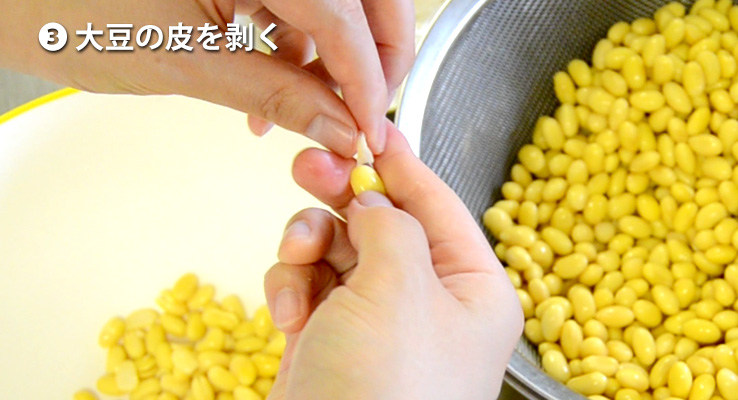
If there is a thin skin on the soybean, there is a high possibility that the fermentation process will not work well. So let's peel all the soybean's skin. Rub the beans gently and peel off the skin. This process takes roughly about an hour.
4. Simmer The Beans
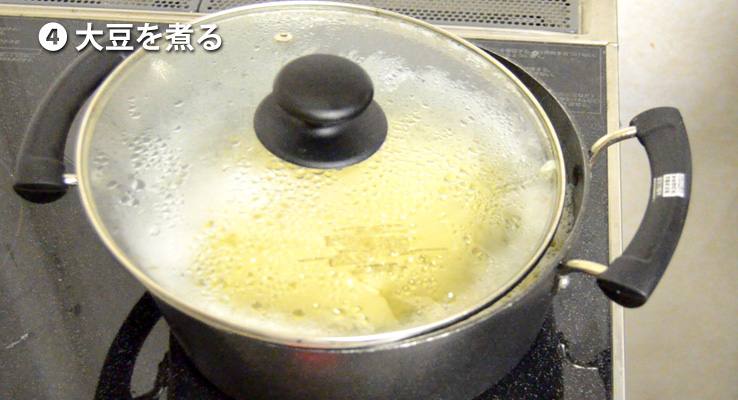
Put the peeled soybeans into a pot, add water and vinegar (1 litre of water with 50 ml vinegar, or 2 litres of water with 100 ml vinegar).
Boil the beans with low heat for about 30 minutes to 60 minutes.
To see if the soybean is done boiling, the soybean should be a little bit hard but not too mushy. It should be a little difficult to squeeze with your fingers. This process is only to make the beans cooked, but not overly cooked.
5. Drain The Beans
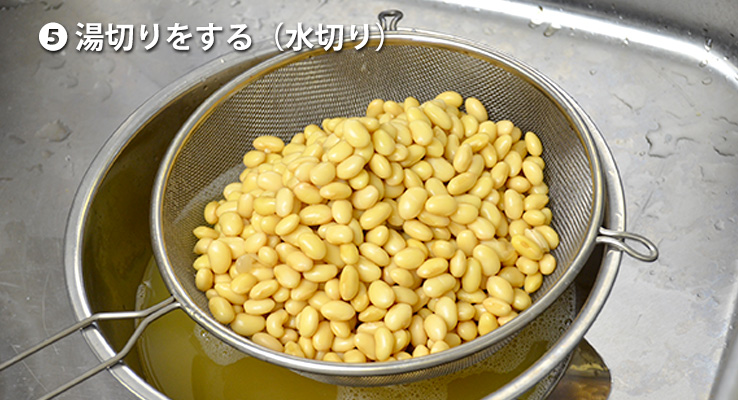
Drain the soybeans and let it cool down. Shake the drainer slowly to fasten the cooling process. Let the temperature drop until it reaches about 40℃.
Let's drain all the water thoroughly. It will help the fermentation process.
6. Add The Tempeh Starter to The Soybeans

Add 1 to 10 grams of tempeh starter per 200 grams of cooked soybeans.
Because it is difficult to mix the tempeh starter evenly to every beans, add some flour (can be corn starch, rice flour, hattaiko, or others) to the tempeh starter. For example, if you put 1 gram of tempeh starter, please add 10 grams of your preferred flour into it. Mix the tempeh starter mixture well.
Put the cooled soybeans into a big plastic bag then add the tempeh starter mixture, shake the bag well so the tempeh starter will spread evenly.
7. Move it To Ziplock Bag
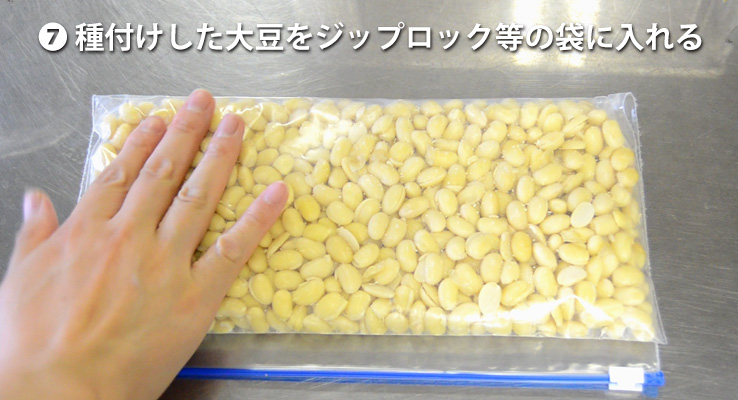
Opened some small hole in the bag with toothpick for air ventilation beforehand.
Tempeh starter will produce carbon dioxide at the fermentation process. So these air holes are necessary to let the carbon dioxide escape and take some oxygen in. Make the hole at in every 3 cm square.
After finishing the holes, put the soybeans soaked with tempeh starter to the bag. Lightly press the bag to make it flat and even.
8. The Fermentation Process
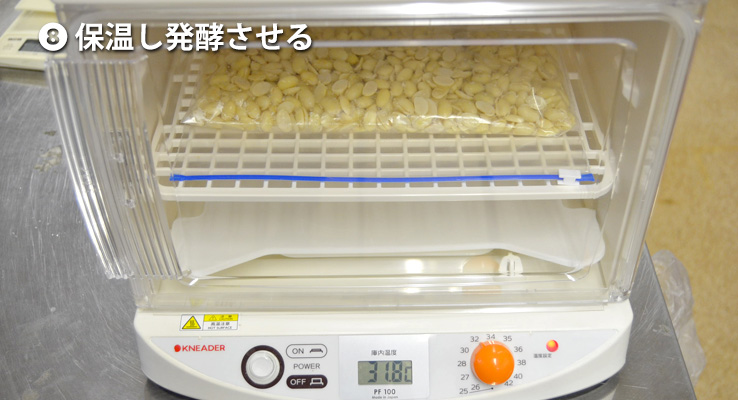
Let the soybeans that has been mixed with tempeh starter ferment for about 20-24 hours or until there are many white mycelium covering the soybeans. The most suitable temperature for fermentation is about 32℃. It is useful to have a warm incubator such as fermentor device, food warmer, rice cooker, etc.
Normally, the white mycelium will be visible in about 16 hours. The white mycelium will cover the surface of soybean and make a solid block shape. The tempeh will be complete when it solidifies.
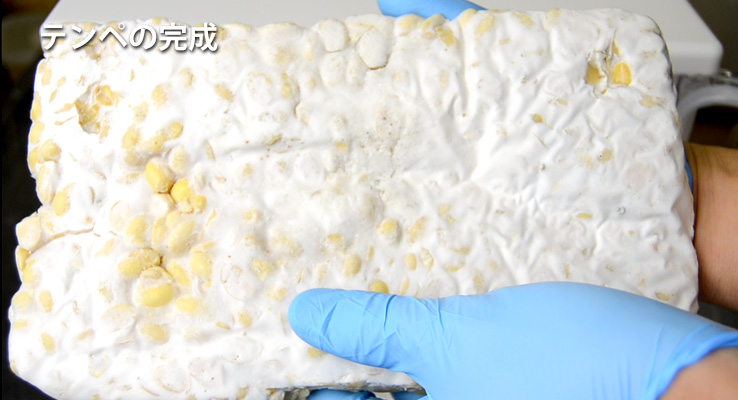
How To Store Tempeh
After the fermentation process is finished, you can store the finished tempeh in refrigerator for another 48 hours.
Refrigerator will stop the fermentation process and prevent the tempeh to expire quickly. If you continue to store it at room temperature, you must cook it maximum in the next 24 hours for best taste.
Frequently Asked Question About Tempeh Making
Is it okay to put too much of tempeh starter to the soybeans?
There's no problem to put a little bit more tempeh starter.
The amount of the tempeh starter needed for 1 kg cooked soybeans (500 grams dried soybeans) is 1 gram tempeh starter. However, it is difficult to make the fixed amount of tempeh starter for each soybeans. So it would be better if you increase the flour, not the tempeh starter. (mix 9 grams of flour to 1 gram of tempeh starter).
I left the tempeh at room temperature, and the color becomes darker (brown to blackish).
Please be sure to save the finished tempeh in the refrigerator for leng term preservation (max 48 hours after the competion of fermentation process).
The Rhizopus spp. in the tempeh starter is still alive even after the completion of the fermentation process. So if you leave it at room temperature, the fermentation process will continue and later it can change the color of the tempeh into brown to blackish color.
You may still eat it if the tempeh doesn't have an odd smell or taste. However, after the continuation of the fermentation process, the taste will drops. An astringent taste also tends to come out. So let's not eat it when it has some strong odor which resembles the odor of strong ammonia or alcohol.
Can I still make it without pulling off the soybean's skin?
Hyphae are harder to grow in the unpeeled soybeans.
If you make tempeh with unpeeled soybeans, the fermentation process won't go well. With the skin, the finished tempeh can be too fragile. Even if you touch it with little force, the hyphae on the beans and skin are easy to tear apart. Therefore, it is not recommended to leave the beans unpeeled if you want to make good tempeh.
The tempeh smells like natto, it also has threads as we found in natto. Is it okay?
There is a possibility that there is contamination from the natto bacillus at the fermentation process.
Natto bacillus is not only in the natto starter powder, but it can also be in our environments such as soil and the atmosphere where it is possible for natto bacillus to grow. We need to clean up the working environment and working tools, boil and sterilize them before begin making tempeh.
Please do not touch or eat natto in the middle of the tempeh making. You also need to wash your hands and make sure it’s clean during the tempeh making. These actions will prevent the contamination from the natto bacillus entering the tempeh.
The tempeh is too soft. It could stick to my teeth making it prone to toothache.
When boiling the beans, be sure to check the softness condition of soybeans with your fingers.
If the tempeh is too soft, it can be because it is boiled too long. If you boil it too much, the delicious bite of tempeh will disappear.
The normal tempeh has a little bit firm texture from the soybeans. Let's make sure that you boil it in low heat for about 30-60 minutes. The ideal condition for the boiled soybeans are soft, but still not easy to break if you squeezed it with fingers.
| Product Details | |
|---|---|
| Name | Tempeh Starter (Ragi Tempeh) |
| Quantity | 100g |
| Raw Ingredient | Tempeh Bascillus (From Glutinous Rice) |
| Country of Origin | Indonesia (Manufactured by Aneka Fermentasi Indonesia) |
| Storage Guide | Keep in a cool dry place. Keep away from sunlight. After opening, keep in an airtight container and refrigerate. |
| Expiry Date | 6 months from production date |
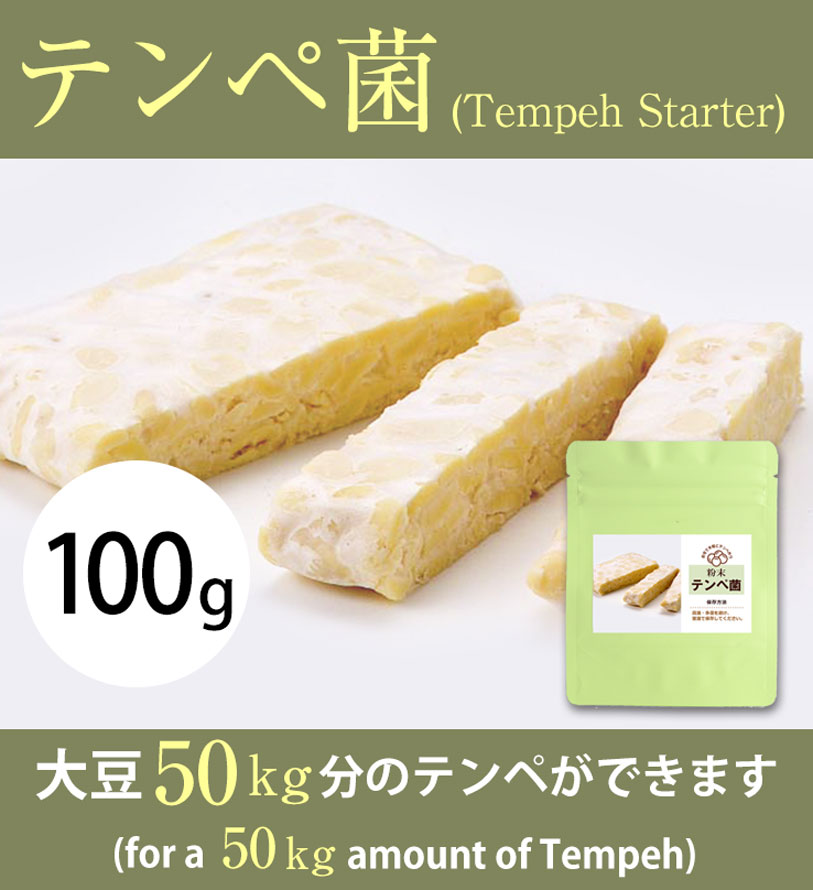
Why shop with KAWASHIMAYA?
- We sell only authentic and high-quality products
- 100% Made in Japan products are as listed
- Organic and non-GMO products are as listed
- All products are new and have long expiry date
- All products are handled directly from our warehouse in Tokyo, Japan
- Easy and secure payment options with CC or PayPal
- Safe and insured international shipping methods
- English and Japanese customer support by email
- Wholesale discount prices available for selected products
- Find insightful articles from KAWASHIMAYA Blog
- Get exclusive discounts for KAWASHIMAYA Newsletter subscribers
- Easy shop on KAWASHIMAYA Amazon USA

